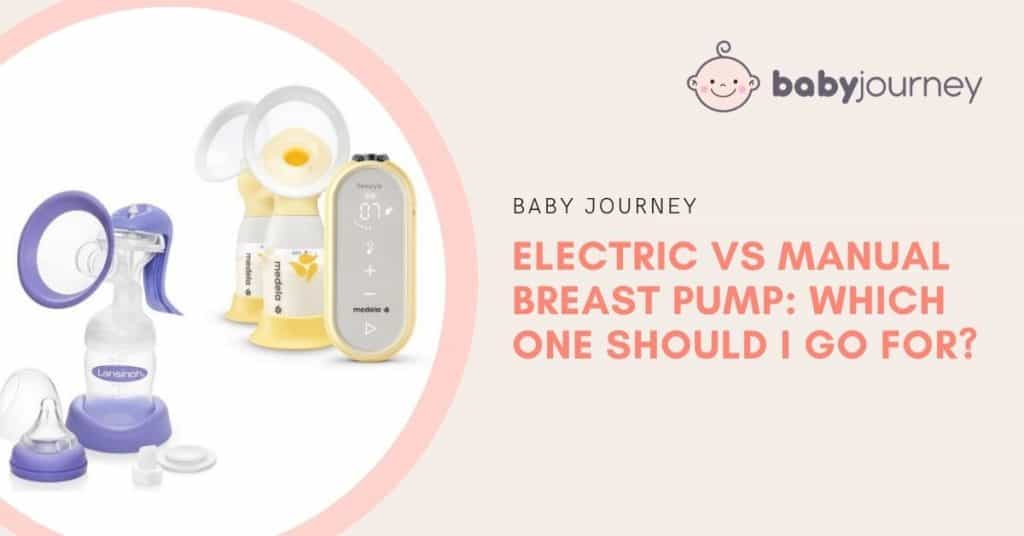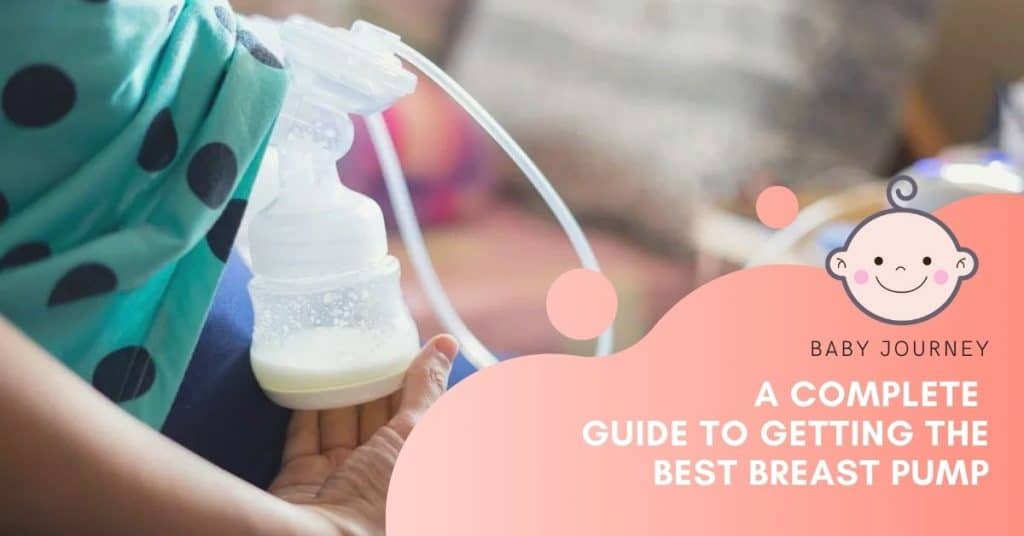Being able to offer breast milk to your child is a wonderful thing! However, sometimes nursing mothers have to pump to provide breast milk instead of breastfeeding their baby. This can leave you questioning, what are the differences between an electric vs manual breast pump?
Our guide will cover the features, advantages, and disadvantages of both, as well as answering likely questions you may have.
Electric Breast Pump vs Manual Breast Pump
Breast pumps can be categorized into two types, a manual breast pump vs electric breast pump. As the name implies, one must be operated by hand and the other is electric.
Let’s take a closer look.
Manual Breast Pumps
A manual breast pump does not use electricity. They can also be referred to as a hand pump, in case you have come across guides comparing a hand pump vs electric breast pump.
A manual pump requires you to use your hand to create the suction to express breast milk. Most manual pumps only have a single pump mechanism, bottle, and flange. They are small and lightweight. They can be quick and easy to operate in addition to being simple to clean and pack.
Manual pumps may often be overlooked, or seen as outdated. However, they have some wonderful advantages for breastfeeding moms.
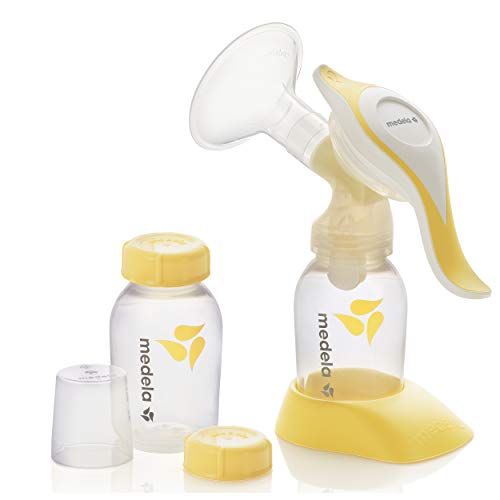
A manual breast pump by Medela.
Pros:
- Lightweight
- No electricity required
- Quick and easy to use
- Very customizable
Cons:
- Can only pump one breast at a time
- Can be tricky to trigger letdown
Electric Breast Pumps
An electric breast pump uses electricity. They can be battery operated or required to be plugged into an outlet. Sometimes an electric pump is known as an auto breast pump. The motor controls the suction and they can be operated hands-free.
There is a wide variety of electric breast pumps on the market. There are open and closed systems, where milk is either prevented from coming into contact with the tubes and machine (closed), or there are no barriers (open). There are also electric wearable breast pumps, electric hospital-grade breast pumps, and electric single or double breast pumps.
Electric breast pumps are often very efficient. They also free up the mother’s hands to take care of other tasks or just relax. Many electric breast pumps allow you to pump both breasts simultaneously, which saves you time.

A double electric breast pump by Medela.
Pros:
- Very effective
- Can pump both breasts at the same time
- Allows you to pump hands-free
- Customizable and a wide variety of options available
Cons:
- Require a battery or electric source
- Often bulkier and more expensive
Many moms often have both types of pumps at their disposal. Each one can be very beneficial depending on your situation. However, if you pump regularly, you will likely prefer an electric pump. If you are a mom who pumps on occasions or uses her pump to relieve engorgement you may want a manual pump.
Electric vs Manual Breast Pump Features Face to Face
When deciding on a manual or electric breast pump it is a good idea to consider your needs and your lifestyle.
Do you pump often or only occasionally? Do you need a pump that allows your hands to be free? Will there be a power source where you are pumping?
These questions can help you decide which features are important to you when comparing a manual versus electric breast pump.
Convenience
The ease of setup and use is very important when choosing a breast pump. Manual breast pumps excel at being simple to set up. They typically only have a few parts, including a flange, a bottle, a valve, and the hand pump mechanism. As a manual pump is made for expressing milk from one breast at a time, there is only one set of parts to deal with.
You don’t have to worry about any tubing, backflow protectors, or keeping your system hygienic. Setting up a manual pump can be done in less than a minute.
Then, all you need to do is compress the pump handle to express milk. Using a manual pump is very easy, however, some women find it difficult to trigger a letdown. Also, you control the speed and the suction strength which allows you to find your comfort level but can also be tiring if you aim for more than one letdown per session.
Cleaning up is just as easy as setting up. In some cases, all of the parts are dishwasher safe.
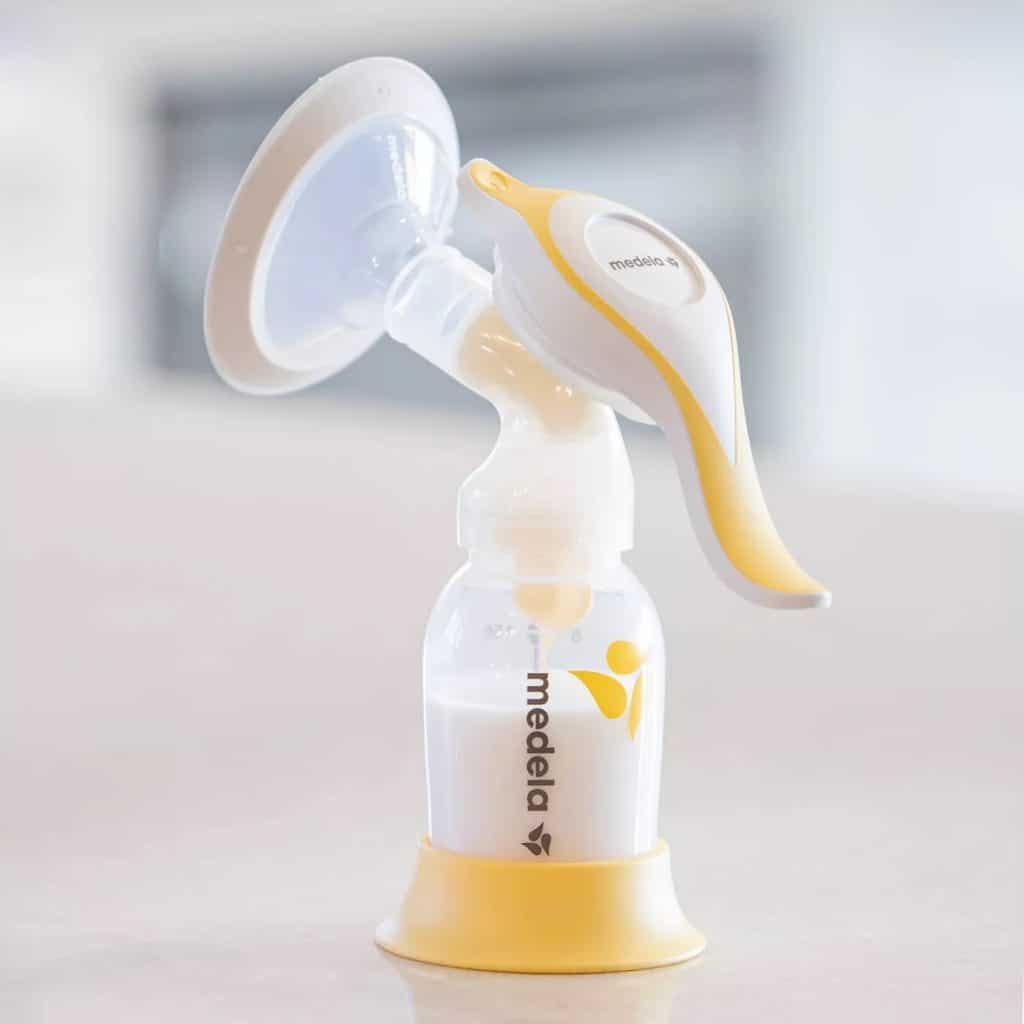
An electric breast pump is a bit more difficult when it comes to setup. There are a variety of parts, and the number of pieces can depend on your type of pump. Double electric breast pumps have two of each piece. Closed systems require backflow protectors, each of these can have as many as three parts for this one piece.

Despite electric pumps’ rigorous setup, they are usually very easy to use. All you need to do is press a button and the pump takes care of the rest. Using a wearable pump, or a hands-free pump bra, you are free to do nearly anything you want.
Electric pumps have many different controls and settings. You can adjust the speed, strength, and frequency. They often have a letdown mode and an expression mode, making it easy to trigger a milk letdown and usually more than one.
When it comes to manual or electric breast pumps for ease of setup and use, the winner isn’t clear. Manual pumps win out for ease of set up while eclectic breast pumps win ease of use.
Safety & Hygiene
Wondering about safety and hygiene when it comes to a manual pump vs electric breast pump? Thankfully, both pump types are about equally as safe.
Electric pumps are almost always a closed system these days, open systems are rare. Closed systems are quite hygienic. Manual pumps don’t have the tubing or inner workings that commonly pose a safety risk.
As long as you properly sanitize your pump and take care when handling your milk, both manual and electric pumps are typically safe and hygienic.
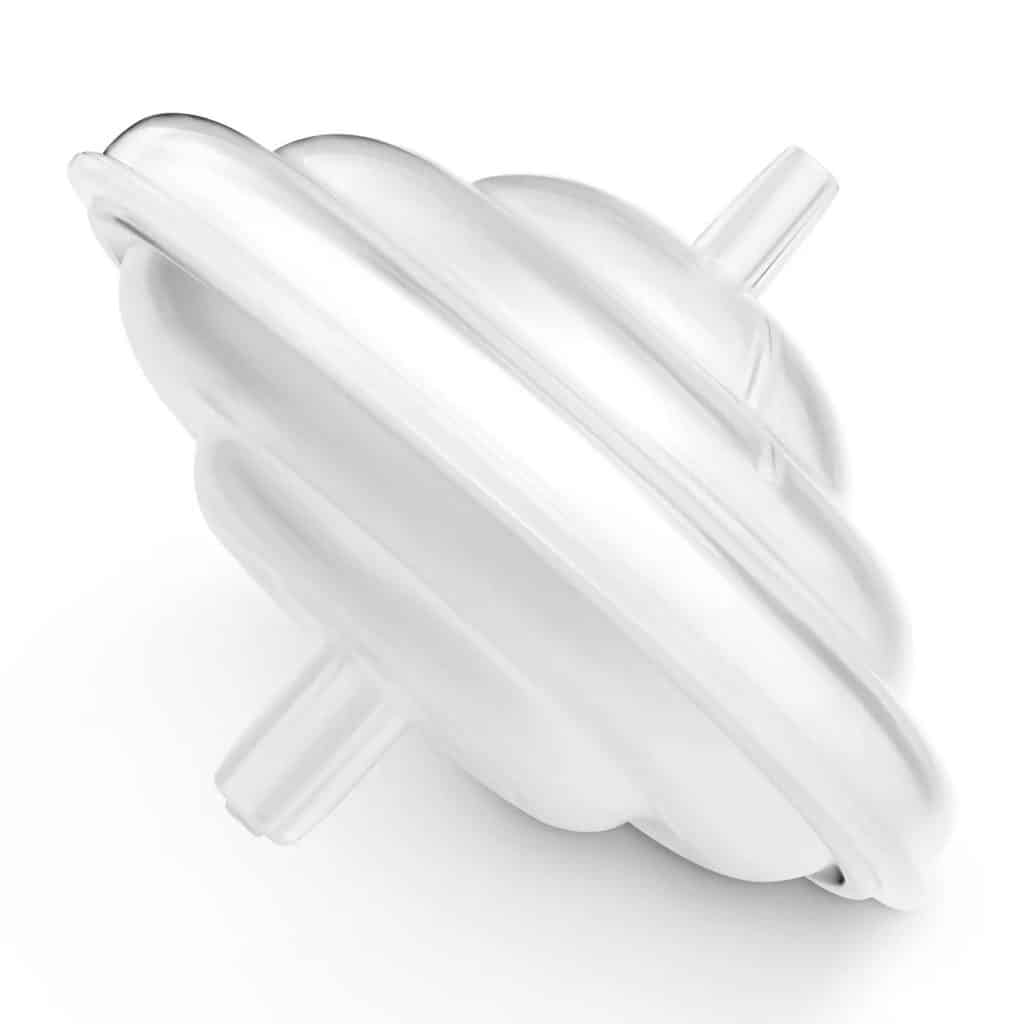
Power Source
When using a manual pump, the power source is you! This can be both a blessing and a curse. You won’t need to rely on electricity or batteries, meaning your pump is super reliable. However, if you pump often or for long periods, your hand and arm will definitely get a workout.
Electric pumps depend on a power source; either batteries or an outlet. They can be tough to travel with, especially if you are going somewhere where electricity isn’t guaranteed. However, when you have electricity they won’t fail you and won’t require great physical effort.
There isn’t a true winner as it depends on personal preference and your scenario.An electric pump backflow protector prevents backflow of milk while pumping.

Cost
Manual breast pumps are often much cheaper than electric. However, electric pumps can pay for themselves over time when you think about all of the physical energy and time you will save. Both manual breast pump and electric breast pump parts need to be occasionally replaced.
When it comes to the cost of a manual vs electric breast pump, a manual pump wins for a lower cost upfront but an electric pump wins for less costly in the long run.
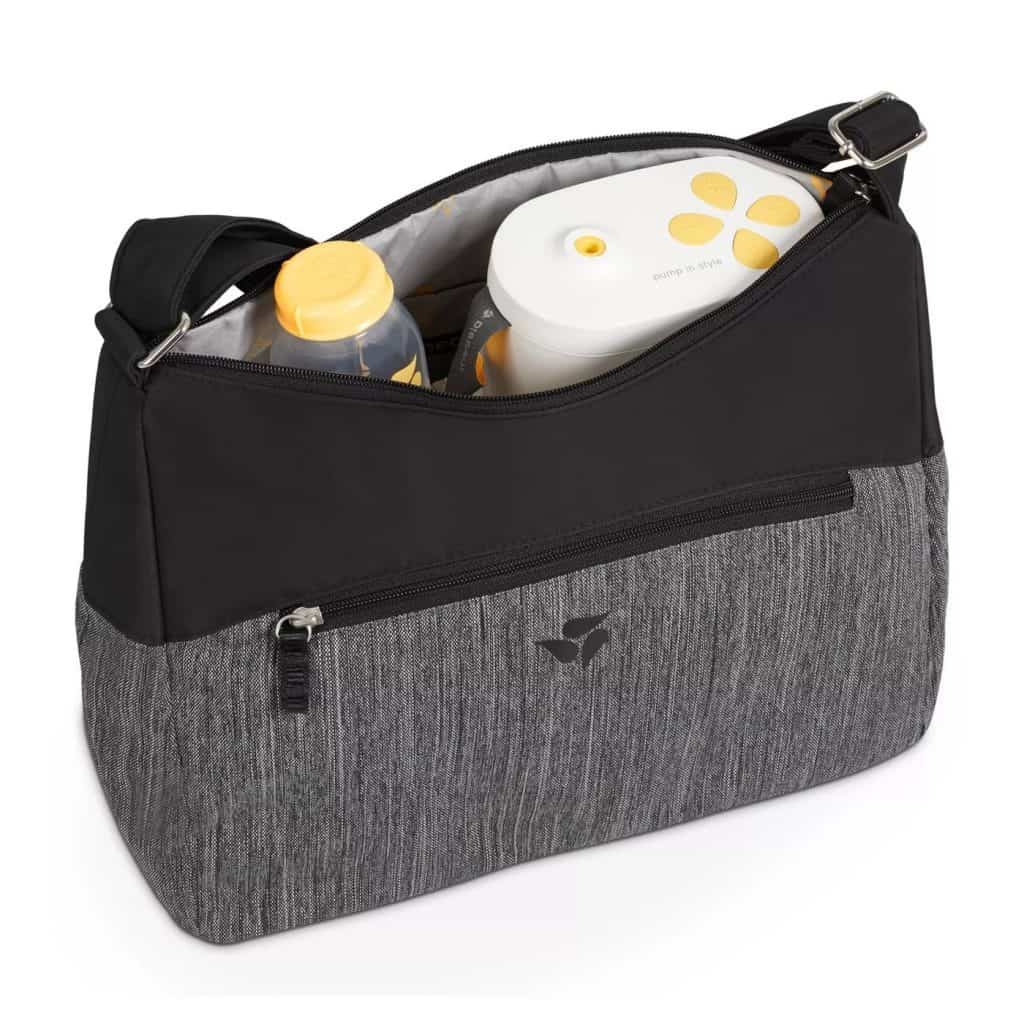
Milk Supply
Wondering “Does manual breast pump increase milk supply?” Well, a manual pump specifically isn’t responsible for increasing supply or making breastmilk fattier. Some women like to use a manual pump after a nursing session, this can increase supply. However, you could just as easily use an electric pump after nursing.
Some mothers have great luck with a manual pump and find that they respond better to a manual when looking at hand expression vs breast pump. Others find that an electric pump produces a better supply. This is especially true because of the variable modes, controls, and settings of an electric pump.
On average, electric pumps are better at maintaining and/or increasing milk supply.
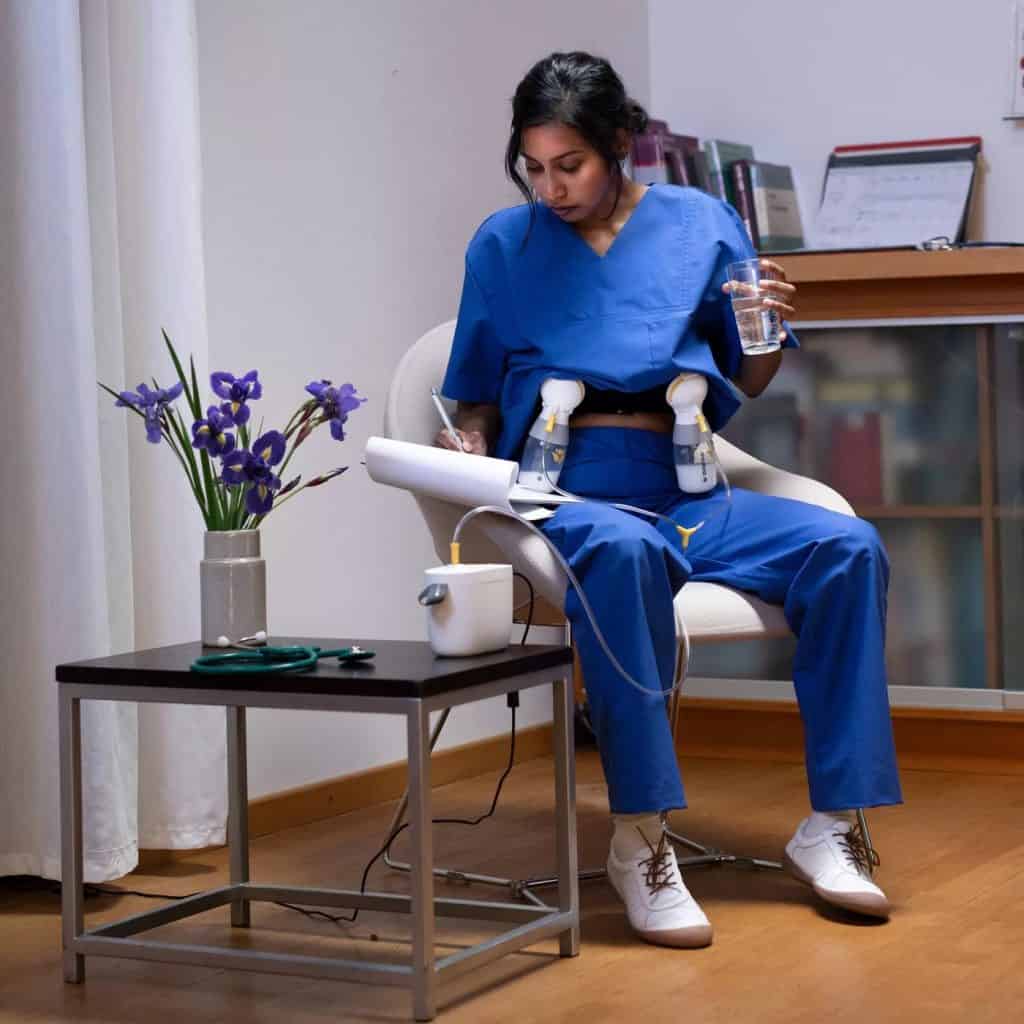
Portability
Manual pumps win when it comes to portability because they don’t require electricity. They are light, small, and easy to pack. There are portable and wearable electric breast pumps, but you are always relying on a power source.
Pumping Discretion
Manual pumps also come in first for pumping discretion. They are usually nearly silent. Electric pumps have a mechanical motor. Even though some are advertised as whisper-quiet, they are never truly silent.
Electric vs ManuaL Breast Pump Summary
Manual Breast Pump | Electric Breast Pump | |
| Number of Parts | 4 or fewer | Greater than 4 |
| Hands-free | No | Yes |
| Requires Power Source | No | Yes |
| Can Double Pump | No | Yes |
| Cost | Affordable | Less Affordable |
Tips On Choosing The Best Breast Pump
Choosing a breast pump largely depends on your preferences and needs. Consider the following:
- Pumping Frequency. Women who pump regularly and often may prefer an electric pump. Those who pump occasionally can likely get by with a manual.
- Budget. Electric pumps are more expensive than manual pumps.
- Portability. If you want a reliable pump that doesn’t depend on a power source, opt for a manual pump.
- Milk Supply. If you are an exclusive pumper or trying to boost your supply, choose an electric pump. Electric pumps are much more effective at draining the breasts of milk than manual pumps.
Many women have both types of pumps as different situations can favor hand expression vs pumping and vice versa.

FAQs on Electric vs Manual Breast Pump
Are manual breast pumps worth it?
For the price, you can’t beat a manual pump. They are great to have as a backup for when the power goes out or your electric pump fails. They are also useful to express only a small amount to help with engorgement or boosting supply.
Can you use a manual breast pump or an electric breast pump every day?
You can use either a manual breast pump or an electric breast pump every day. However, if you are a regular pumper you will probably prefer an electric pump.
How long should I manually pump my breast?
How long to pump using a manual pump depends on your responsiveness to the pump. You generally want to trigger a letdown and then continue pumping for a minute or two after the milk has stopped flowing.
Do I really need an electric breast pump?
You don’t need an electric breast pump per se, but they are very convenient.
Is an electric breast pump painful?
An electric breast pump should not be painful, if it is you need to adjust your settings.
I plan to get a manual pump, what is the best manual breast pump I should consider?
Two very popular pumps are the Medela Harmony Manual Breast Pump and the Haakaa Manual Breast Pump.
Can you recommend the best electric breast pump?
You should find an electric pump that suits your lifestyle and needs, but two well-rated pumps are the Medela Pump in Style with MaxFlow Electric Breast Pump and the Elvie Double Electric Wearable Smart Breast Pump.
Which Pump is Right For You?
There are advantages and disadvantages to both a manual and electric breast pump.
Choose a manual pump if you:
- Want portability
- Only pump occasionally
- Prioritize discretion
- Want an easy setup option
Alternatively, choose an electric pump if you:
- Pump regularly
- Want to maintain or boost supply
- Want a hands-free option
- Want to pump both breasts at once
Hope this quick guide helps! Are you on team manual breast pump or team electric?
Thoughts? Comment below – we’d love to hear from you!
—
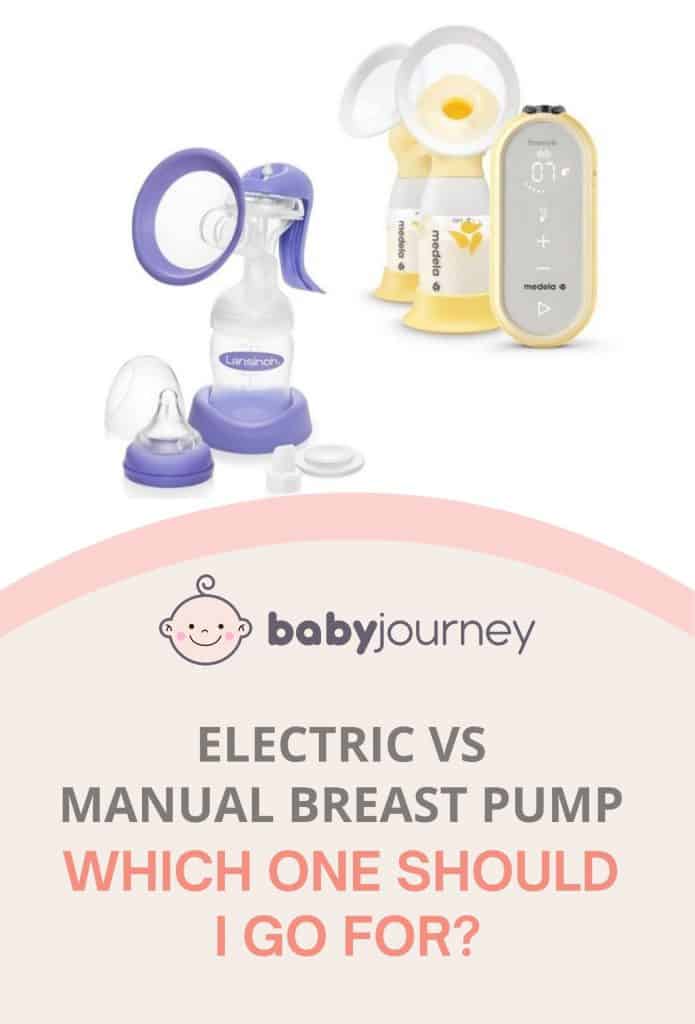
Last update on 2024-04-19 / Affiliate links / Images from Amazon Product Advertising API

